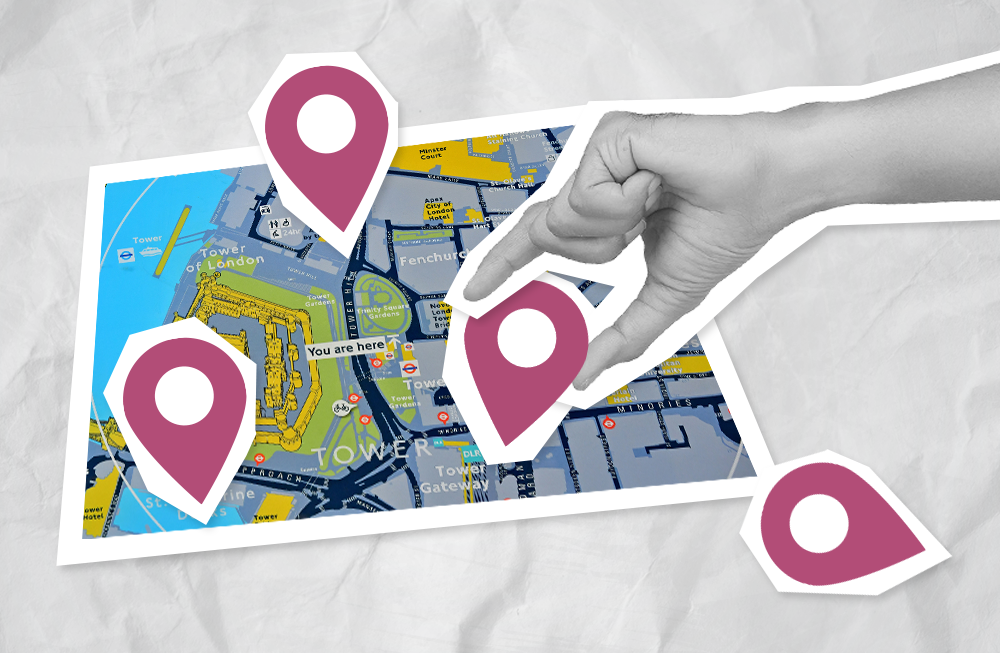Whether you create your curriculum from scratch or adopt a published scheme, one crucial element that requires careful consideration from subject leaders and teachers is making the curriculum bespoke for your school’s context. It requires meticulous planning to ensure rich connections between curriculum content and meaningful learning experiences, and the fostering of lasting partnerships between the school and the community. Utilising what is on your doorstep can enhance children’s educational experiences and contribute to everything from cultural capital to raising aspirations.
‘Alone we can do so little; together we can do so much.’
Helen Keller
How to localise elements of your school curriculum
Making connections between children’s local environment and knowledge learned in the classroom can inspire children to ask questions, become more inquisitive, engage in open dialogue with parents or carers, and encourage them to conduct research about their locality outside of school.
1. Using local resources
It is often surprising how many free and accessible resources there are within your local community. Once you have identified what is available, it is important to try and incorporate these into your curriculum where appropriate and valuable. Resources might include statues of locally significant people; historically significant buildings; plaques that signal buildings where someone famous or influential lived; interesting art (permanent or temporary) that has been installed by a local artist; sites of historical, scientific or geographical significance such as battle fields; landmarks; and natural phenomena such as rivers.
If it is not feasible to take groups of children out of school due to costs or logistics, take photographs or a video to show the children. Alternatively, ask friends and family members to take photographs if you know they are visiting the area.
2. Working with a local secondary or high school
There are endless benefits to having older children work with younger ones. Older children can develop leadership skills by taking on the responsibility of educating those younger than themselves. They can foster empathy through the understanding that not all children learn at the same pace or in the same way. They may also take pride in the work that they have produced by sharing it with a different audience, whether it be younger children or teachers from another school.
Younger children may see their older peers as role models and listen to them more intently. They could also use this as an opportunity to ask questions aloud, which will build confidence, self-esteem and public speaking skills.
Together, this style of sharing knowledge leads to a variety of holistic skills, including interdependence, understanding, cooperation, empathy and communication.
For example, watching the local secondary school orchestra or band in a musical performance can invoke questions about different musical instruments, genres and musicians. Seeing interesting science experiments or cooking demonstrations for design & technology may nurture a desire to investigate a range of STEM subjects in more depth later in their academic journey. Being part of the audience at the secondary school show or a battle reenactment for a history project could appeal to children interested in the arts, develop listening skills and inspire different kinds of writing.
Collaborating with teachers in a secondary setting also provides you with the opportunity to share subject knowledge with each other. This is particularly useful for primary subject leaders who may not be confident in the subject that they are leading.
3. Discover local community projects
There are often many opportunities within the local community for children to get involved in a variety of different projects. Here are six ideas to get you started:
Litter-picking
Litter-picking can help children gain a sense of belonging to their community whilst making a positive impact. You can reinforce the importance of caring for the environment through assemblies, guest speakers, reading, and working with members of the local environmental management teams.
Working with foodbanks, charity shops and shelter collections
Foodbanks are an essential lifeline for those who are struggling or unable to pay for food. Charity shops can also be an essential part of everyday life. By exploring the logistics of how these services work and their dependence on the generosity of the local community, children could visit and speak with volunteers or plan a fundraiser or food collection event to ‘give back’ to their community.
Tree & wildflower planting
Despite the obvious physical and mental health benefits of being outdoors, working to enhance the natural environment plays a major role in educating children about the sustainability aspects of science and gives them a sense of purpose in their own community. Nurturing seeds into something permanent for generations of children to come will be very rewarding for those who have planted them!
Farm-to-table cooking classes
With the connection between how food is grown and the food on children’s plates becoming increasingly weaker, many local farms will be extremely enthusiastic to share their work and food production journey with schools. Several farms will run workshops throughout the year on growing, harvesting and preparing food and will welcome groups of school children and teachers to join them for a visit.
Care and residential home visits
There are endless benefits for both older residents and children during visits to a local residential home. Communication and language development, social skills, emotive feelings, empathy, and abstract reasoning are just a selection. Activities could include listening to stories about growing up and the past, asking children to read stories to residents from books they are studying in school, and putting on a performance such as singing, dancing, an orchestra or band.
Local places of worship organising charitable services and events
Many churches, mosques and other places of worship will regularly hold fundraising events for charities. Perhaps arrange a visit for the children in your class so they can get involved! It’s a great way for them to help raise awareness about various causes and strengthen relationships between everyone in the local community.
4. Engaging parents and carers
The proverb, ‘It takes a village to raise a child’ resonates powerfully when we look at how our social connections impact us. According to Ubuntu philosophy, ‘We are who we are because of everyone.’ Every interaction with a person has shaped us into the people we are now: our belief systems, values, ethics, morals, personalities and our understanding of the world. So, when we think of education and what that entails, we cannot narrow it down to a simple ‘children are taught by teachers’ mindset.
Loris Malaguzzi, pedagogist and founder of Reggio Emilia schools, theorised that there are three ‘teachers’ of children: the parents, the classroom teacher and the environment. With this in mind, the role of the parents and carers is pivotal for the educational development of children.
For those parents and carers wanting to support children further with their learning, you could publish your termly curriculum content in advance for them to see, along with any home learning activities, such as visiting places, researching aspects or exploring new vocabulary. Then, you can ask them if they have any links to the topics or projects either through their job, their family and friends or objects from home. This way, you could facilitate a ‘guest speaker’ slot and invite them into school to talk to your class and share their knowledge and experiences.
5. Invite guest speakers from the community
Guest speakers can offer a wealth of specific knowledge in relation to particular subjects and can also facilitate a connection to the world beyond the classroom. They can talk about real-world experiences, ensuring that all children have the same opportunities to understand the extension of classroom learning and contextualise it in a meaningful way.
‘We cannot live only for ourselves. A thousand fibres connect us with our fellow men.’
Herman Melville
Alternatively, many different platforms are available to host an online meeting if it isn’t possible for your guest to physically visit the school. Close the blinds, turn off all the lights and project the guest onto a large screen at the front of the classroom to immerse the children in the experience! This has been the case for a selection of lucky schools across the globe that have interviewed astronauts and cosmonauts on the International Space Station with links to their own community. A live feed was set up and children could interact with them, ask lots of questions and have a live tour of the inside of the International Space Station. Not only does this add to children’s cultural capital, but it can also inspire them, raise their ambitions and contribute to their life choices once they leave school.
Depending on the subject or topic you are teaching, you might consider inviting:
- well-known or famous school alumni
- someone representing your local community through sports or the arts
- a resident from the local care home
- a local industry or business expert
- parents and carers of children
- your own friends and family
- your local outdoor activity specialist
- a volunteer from a community project.
6. Use the library and internet to discover historical local news
A wealth of information can be found about your school’s history at your local library. This is a great way to contextualise learning and make it meaningful for children. It can also help enhance research, independent learning, writing and communication skills. Also, you should have access to historical local newspaper archives to help children identify significant events, people or places that were prominent in the locality dating back many years.
Summary
Although every school will have various events, projects, people, experiences and businesses available to them in their locality, there will always be something to immerse the children in a ‘real world’ experience. With careful thought and planning, we can ensure that these experiences provide meaningful learning opportunities for children.
How we help schools to localise their curriculum
We provide the tools to easily design and manage your own primary curriculum through our innovative platform, Maestro. With a whole curriculum or single subject annual licence, you can use fully sequenced curriculum projects from Nursery to Year 6 along with the tools to adapt and localise the projects to suit the unique needs of your children and school.



